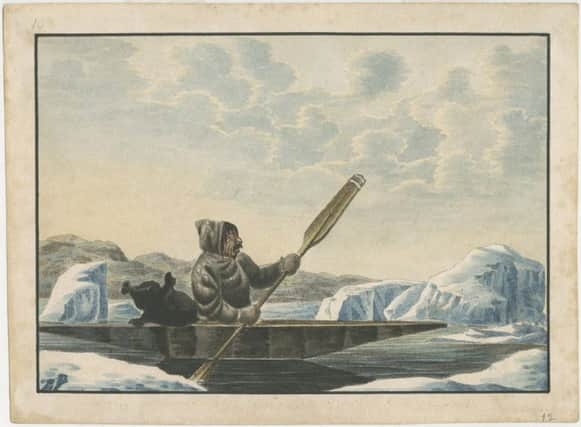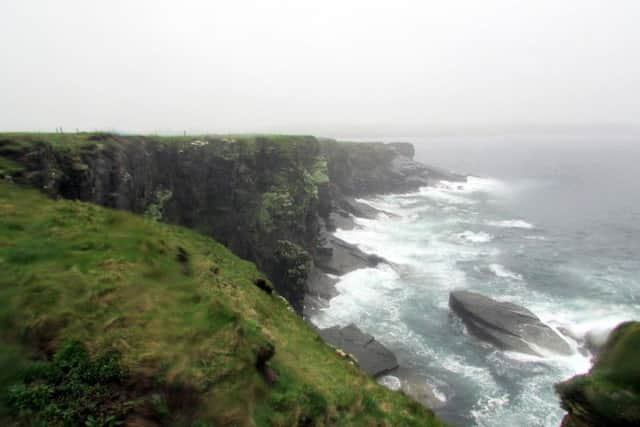Was Orkney home to an Inuit settlement?


On board the vessel, which was captured in the North Sea close to Belhelvie, was a man of Indian appearance. He was later to become known as a Finnman.
Equipped with a paddle, a spear, a bird spear and a harpoon, the man died shortly after being brought into the city.


Advertisement
Hide AdAdvertisement
Hide Ad“He was brought alive to Aberdeen, but died soon after his arrival, and could give no account of himself,” wrote Francis Douglas in his General Description of the East Coast of Scotland in 1782.
“He is supposed to have come from the Labrador coast, and to have lost his way at sea.”
His arrival, said to have been between 1680 and 1710, has been a riddle ever since.


Some accounts have suggested he escaped from a European whaling boat, the man taken aboard as a form of exhibit or trophy from a whaling expedition.
Others believe he had ventured from Orkney, where Inuits from Davis Straits may have settled during the Little Ice Age when seas around Greenland became solid and impossible to hunt.
Two other canoes were also captured around the Orkney Isles during the same period - one was gifted to Edinburgh University and another was displayed in a church at Burra. The Belhelvie canoe is held at Aberdeen University’s museum.
Rev James Wallace, Minister of Kirkwall, wrote of Finnmen rowing around the islands in his book Description of the Isles of Orkney, published in 1693,
Advertisement
Hide AdAdvertisement
Hide Ad“In the year 1682 one was seen sometime sailing, sometime rowing up and down in his little boat at the south end of the Isle of Eda, most of the people of the Isle flocked to see him, and when they adventured to put out a boat with men to see if they could apprehend him, he presently fled away most swiftly,” the minister wrote.
In 1684, another of the Finnmen was spotted from Westray, Rev Wallace wrote.
“These Finnmen seem to be some of these people that dwell about the Fretum Davis (Davis Straits),” he added.
A separate account, which dates from 1701, suggests “frequent” sightings of Finnmen including one that year in Westray and another on Stronsay in 1699.
The minister’s son, Dr James Wallace, who edited his father’s book, accepted his father’s claim that the Eskimos of Davis Straits were the Finnmen of the Orkney Islands.
Dr Wallace said of his father’s account: “I must acknowledge it seems a little unaccountable how these Finnmen should come on this coast, but they must probably be driven by storms from home, and cannot tell, when they are anyway at sea, how to make their way home again.
“They have this advantage...their boats being made of fish skins are so contrived that he can never sink but is like a sea-gull swimming on the top of the water.”
Advertisement
Hide AdAdvertisement
Hide AdDavid MacRitchie in his paper “The Aberdeen Kayak and its Congeners”, which was presented to the Scottish Society of Antiquities in 1912, said it was “clearly untenable” that the Aberdeen canoeist paddled 2,000 miles from Labrador to Scotland, a journey which would have taken three to four weeks.
MacRithcie added: “Much more might be said in favour of a theory that the voyager had crossed to Greenland from Labrador, or had started from Greenland and had thereafter crossed to Iceland, thence to the Faroes, and thence to Shetland and Orkney.”
MacRitchie said a simpler theory would be that the Aberdeen man had made an “involuntary voyage eastward” as a prisoner on board of a European ship.
He noted the “very old custom” of “bringing specimens of strange people to one’s own country, with or without their consent.”
In Dundee during the late 1800s, Inuits were put on show in public halls after being brought to Scotland on ships returning from whaling expeditions.
Norman Rogers, author of Searching for the Finmen, wrote in a 2014 article that he believes the Aberdeen Inuit who came ashore in Aberdeen “probably escaped” from a homebound whaler.
He added: “I think the solution to the riddle of the Finmen in Orkney lies elsewhere.”
Advertisement
Hide AdAdvertisement
Hide AdRogers points to the climate being at its coldest when the Inuit in Orkney were thought to have arrived, at the end of the 17th Century.
He said: “One can imagine that, if climatic conditions became too severe to support life, there would
be a large proportion of the population which would succumb to starvation.
“Inadvertently, a group of Inuit hunters might have travelled by kayak east along the ice edge towards Europe resulting in the sightings of the Finmen in Orkney.”
Finnfolk are also referred to in Orkney folklore. They are described as sorcerous shapeshifters of the sea who come ashore during spring to search for human captives to force into lifelong servitude as a spouse.
